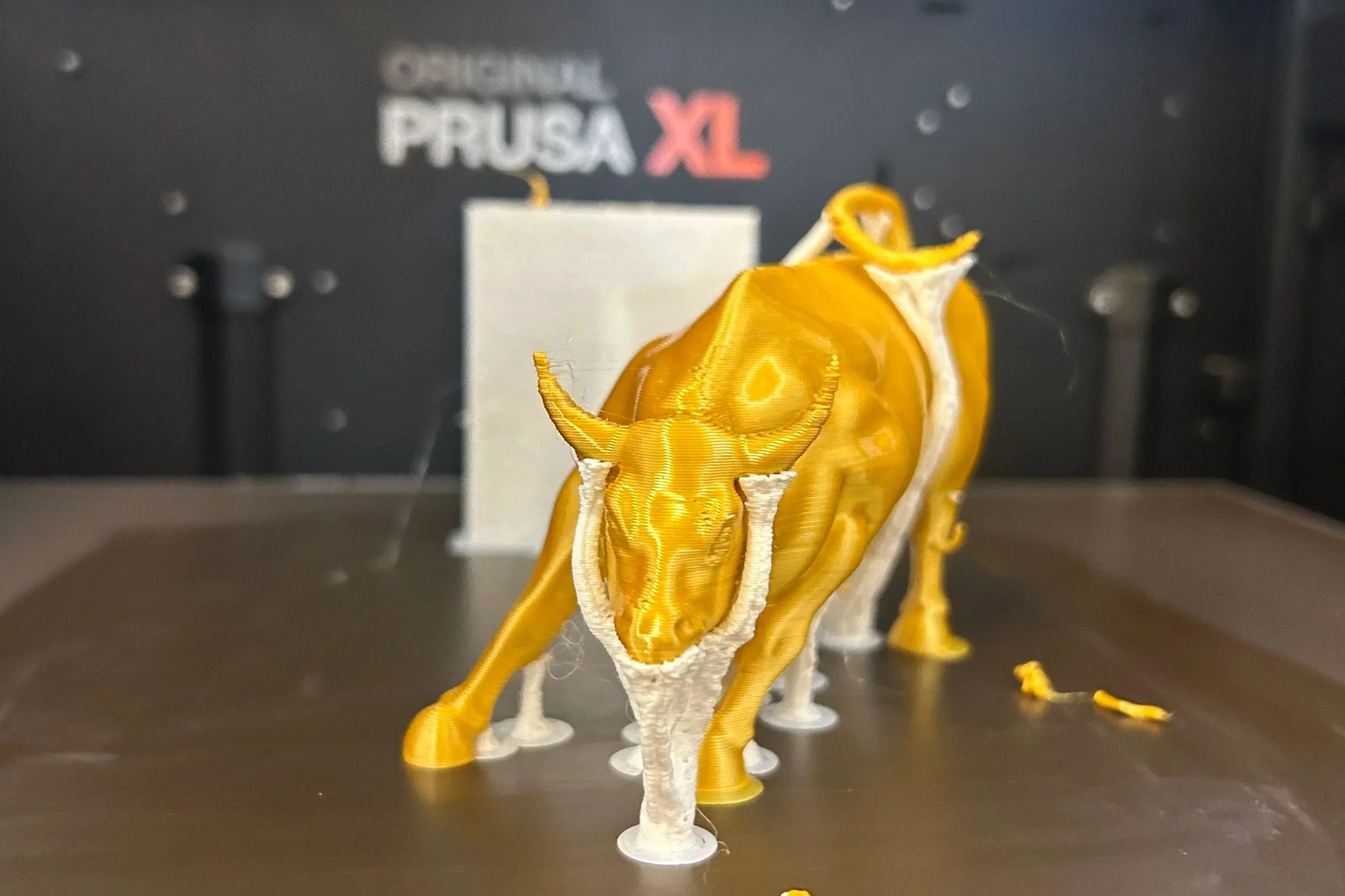Multi Material Printing
Charging Bull printed in gold PLA with white PETG supports
The MAKE studio has the PRUSA XL 5 head 3d printer, allowing us to print objects with multiple colors and even giving us the the opportunity to use multiple materials during the same print. The way different plastics interact with each other can be utilized to achieve results that might otherwise be impossible. For instance, two common plastics we typically use are PLA (polyactic acid) and PETG (Polyethylene terephthalate glycol). These plastics are fairly similar in many respects. They react consistently and predictably under temperature, making them reliable for 3D printing. Both are fairly durable, and don’t produce toxic fumes. Many of the print jobs we have in MAKE don’t have any special requirements, so either filament may be acceptable and we use the plastics interchangeably. But as PLA and PETG are two different plastic polymers, they do not like bonding with each other. We can use this characteristic to our advantage. For example dedicating PETG as the support material for a PLA model, can allow us to print a model with support structures that fall off easily once we remove the model from the printing plate. Sanding and cleaning up the surface of the model that contacted the support structure can be particularly aggravating, so experienced makers understand the value of models not requiring extensive post processing.
While the utility of multi material printing is evident, it does pose some challenges for us to solve. The different operating temperatures of the two filaments cause various issues for printing. For instance PLA is extruded at around 200° C and is printed onto a bed around 60°C while PETG prints at the hotter temperature of 220°C onto a 70°C bed. Because the Prusa has 5 tool heads that can have individual temperature settings, the printer solves one problem for us, but we have to compromise on the bed temperature. Using a glue stick on the printing bed helped keep the model and supports adhered to the bed despite the suboptimal temperature.
Below are screenshots of the various print settings I played around with to get the print to work. Using PLA for the model and PETG for the supports.
The settings that I believe led to a successful print are below. We will continue to update these settings as we dial in what works best:
Under Print Settings
Skirt and brim ->
Set a sizable brim to help with print stability. 4mm minimum
Support material ->
Generate Support Material
Set the style to “Organic”
Set the Top contact Z distance to “0 (soluble)”
Turn off the interface layers
Set the XY seperation to “0” or at least a lower number
Speed —>
Slow down the perimeter speeds. We used “30 mm/s” for Perimeters and “25mm/s” for External Perimeters
We also lowered the acceleration for these two variables. Down to “500mm/s^2” and “600mm/s^2” for external perimeters and perimeters respectively
Multiple Extruders —>
Set your support material extruder to the tool head you loaded with you support.
Set your wipe tower to either the support or model filament. (Without designating one or the other may cause the wipe tower to fail)
We will continue to test and refine these multi material prints and post our findings on our blog and instructables page.







